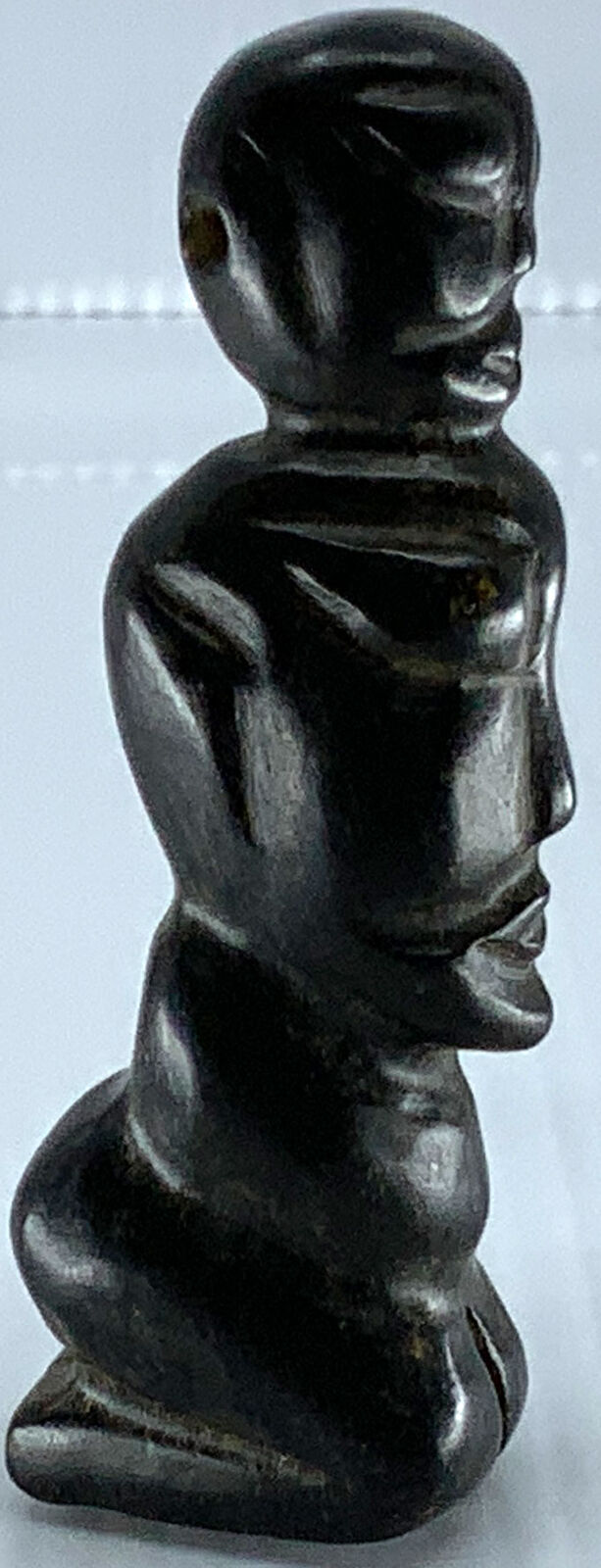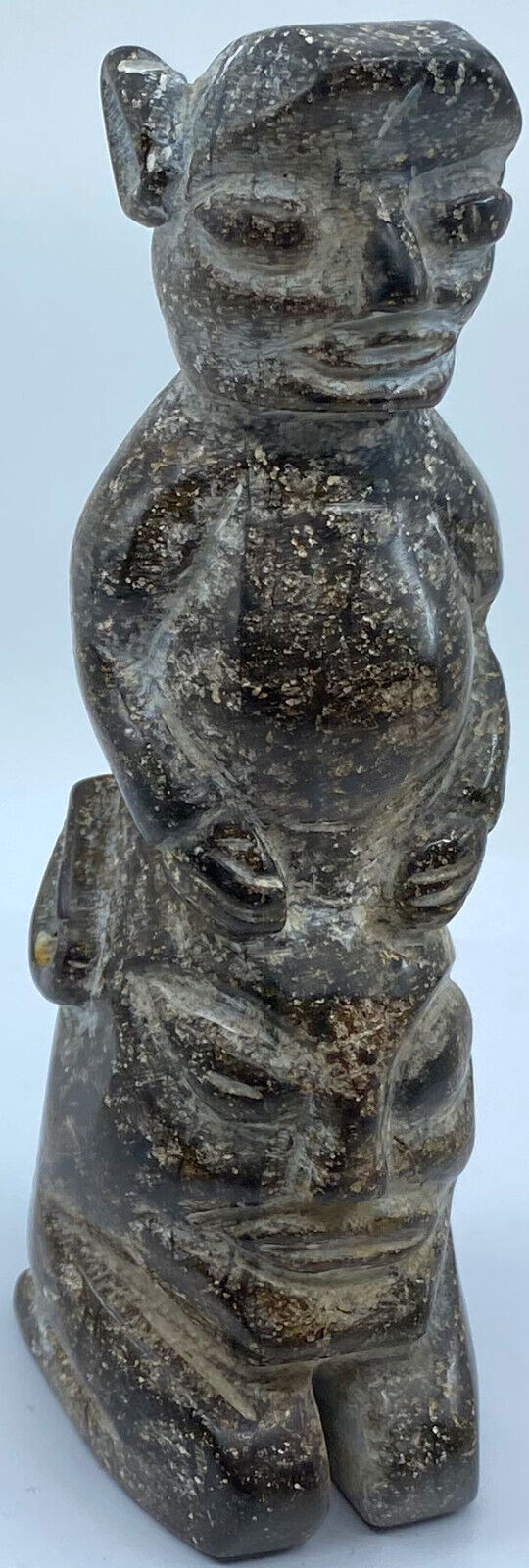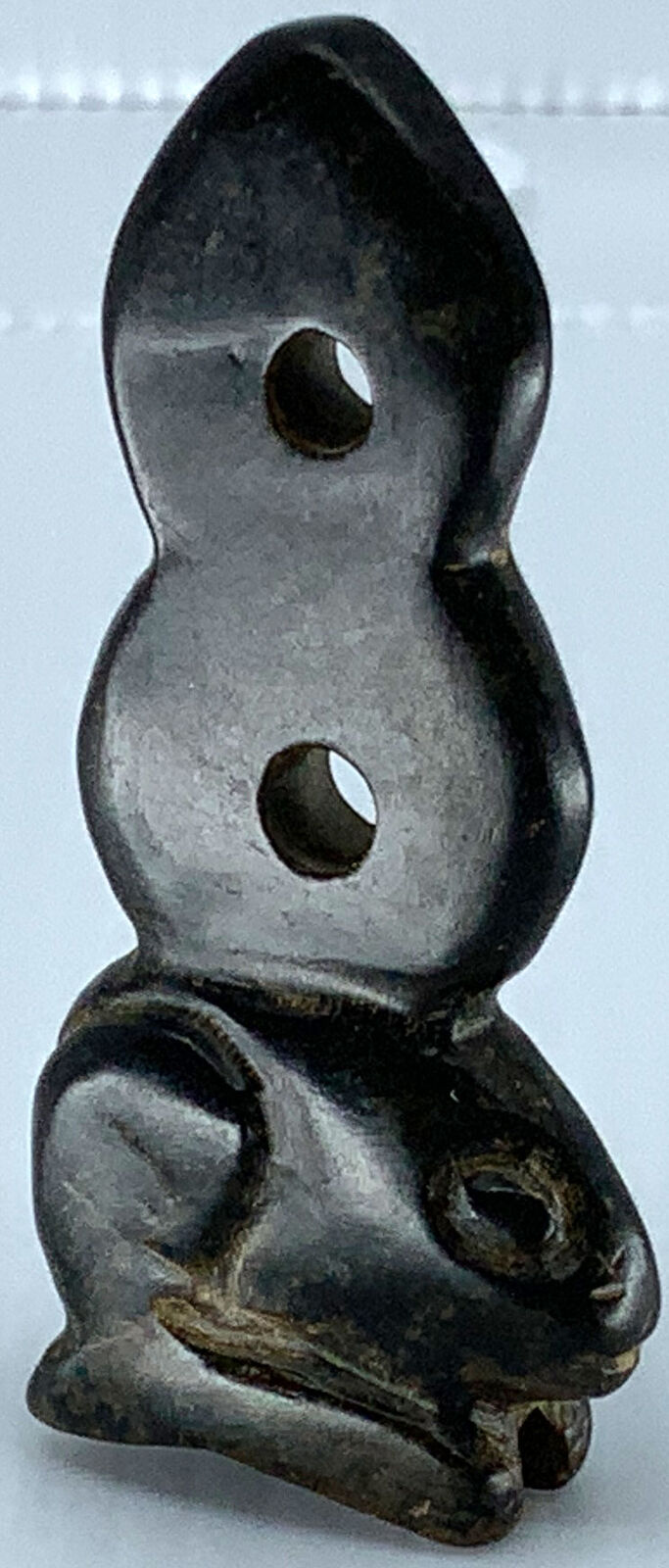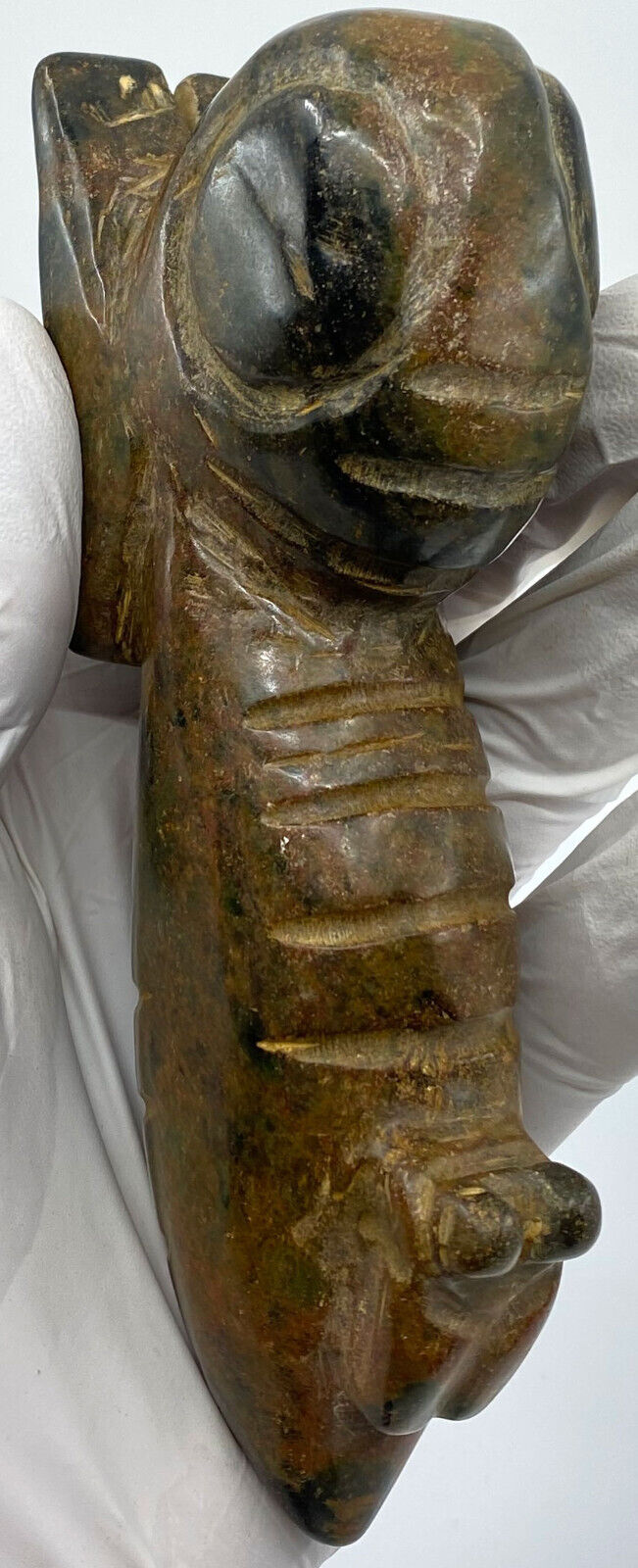|
China – Decorated Rod
Jade (or possibly other Stone) 25.1×1.2×1 centimeters (89.7 grams) Made circa Han Dynasty, circa 206 B.C. – 220 A.D.
One side is decorated with birds flying above a sun with other side being ostensibly Chinese lettering. Perhaps this was a reading stick to point to individual letters on a scroll being read to not touch with hands. Likely was attached to the reading table with string so it would not be lost. It could also be of a large weight to keep the scroll open and at same time keep the reading spot.
Provenance: From private collection in the United States of America.
Ownership History: From private collection in the United States, bought in private sale in the United States of America.
You are bidding on the exact item pictured, provided with a Certificate of Authenticity and Lifetime Guarantee of Authenticity.
The Han dynasty ( traditional Chinese: 漢朝; simplified Chinese: 汉朝; pinyin: Hàncháo) was an imperial dynasty of China (202 BC – 9 AD, 25-220 AD), established by Liu Bang and ruled by the House of Liu. The dynasty was preceded by the short-lived Qin dynasty (221-207 BC) and a warring interregnum known as the Chu-Han contention (206-202 BC), and it was succeeded by the Three Kingdoms period (220-280 AD). The dynasty was briefly interrupted by the Xin dynasty (9-23 AD) established by usurping regent Wang Mang, and is thus separated into two periods-the Western Han (202 BC – 9 AD) and the Eastern Han (25-220 AD). Spanning over four centuries, the Han dynasty is considered a golden age in Chinese history, and it has influenced the identity of the Chinese civilization ever since. Modern China’s majority ethnic group refer to themselves as the “Han people” or “Han Chinese”. The spoken Sinitic language and written Chinese are referred to respectively as the “Han language” and “Han characters”.
The emperor was at the pinnacle of Han society. He presided over the Han government but shared power with both the nobility and appointed ministers who came largely from the scholarly gentry class. The Han Empire was divided into areas directly controlled by the central government called commanderies, as well as a number of semi-autonomous kingdoms. These kingdoms gradually lost all vestiges of their independence, particularly following the Rebellion of the Seven States. From the reign of Emperor Wu (r. 141-87 BC) onward, the Chinese court officially sponsored Confucianism in education and court politics, synthesized with the cosmology of later scholars such as Dong Zhongshu. This policy endured until the fall of the Qing dynasty in 1912.
The Han dynasty saw an age of economic prosperity and witnessed a significant growth of the money economy first established during the Zhou dynasty (c. 1050-256 BC). The coinage minted by the central government in 119 BC remained the standard coinage of China until the Tang dynasty (618-907 AD). The period saw a number of limited institutional innovations. To finance its military campaigns and the settlement of newly conquered frontier territories, the Han government nationalized the private salt and iron industries in 117 BC, though these government monopolies were later repealed during the Eastern Han dynasty. Science and technology during the Han period saw significant advances, including the process of papermaking, the nautical steering ship rudder, the use of negative numbers in mathematics, the raised-relief map, the hydraulic-powered armillary sphere for astronomy, and a seismometer employing an inverted pendulum that could be used to discern the cardinal direction of distant earthquakes.
The Han dynasty had many conflicts with the Xiongnu, a nomadic confederation centered in the eastern Eurasian steppe. The Xiongnu defeated the Han in 200 BC, prompting the Han to appease the Xiongnu with a policy of marriage alliance and payments of tribute, though the Xiongnu continued to raid the Han’s northern borders. Han policy changed in 133 BC, under Emperor Wu, when Han forces began a series of military campaigns to quell the Xiongnu. The Han ultimately defeated the Xiongnu, forcing them to accept vassal status as Han tributaries, and the Xiongnu confederation fragmented. The Han conquered the Hexi Corridor and Inner Asian territory of the Tarim Basin from the Xiongnu, helping to establish the vast trade network known as the Silk Road. The lands north of the Han’s borders were later overrun by the nomadic Xianbei confederation. Emperor Wu also launched successful conquests in the south, annexing Nanyue in 111 BC and Dian in 109 BC. He further expanded Han territory into the northern Korean Peninsula, where Han forces conquered Gojoseon and established the Xuantu and Lelang Commanderies in 108 BC. After 92 AD, the palace eunuchs increasingly involved themselves in the dynasty’s court politics, engaging in violent power struggles between various consort clans of the empresses and empresses dowager. Imperial authority was also seriously challenged by large Daoist religious societies which instigated the Yellow Turban Rebellion and the Five Pecks of Rice Rebellion. Following the death of Emperor Ling (r. 168-189 AD), the palace eunuchs suffered wholesale massacre by military officers, allowing members of the aristocracy and military governors to become warlords and divide the empire. The Han dynasty came to an end in 220 AD when Cao Pi, king of Wei, usurped the throne from Emperor Xian.
|



















